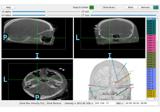mne.viz.set_3d_backend#
- mne.viz.set_3d_backend(backend_name, verbose=None)[source]#
Set the 3D backend for MNE.
The backend will be set as specified and operations will use that backend.
- Parameters:
- backend_name
str The 3d backend to select. See Notes for the capabilities of each backend (
'pyvistaqt'and'notebook').Changed in version 0.24: The
'pyvista'backend was renamed'pyvistaqt'.- verbosebool |
str|int|None Control verbosity of the logging output. If
None, use the default verbosity level. See the logging documentation andmne.verbose()for details. Should only be passed as a keyword argument.
- backend_name
- Returns:
Notes
To use PyVista, set
backend_nametopyvistaqtbut the valuepyvistais still supported for backward compatibility.This table shows the capabilities of each backend (”✓” for full support, and “-” for partial support):
3D function:
pyvistaqt
notebook
✓
✓
✓
✓
✓
✓
✓
✓
✓
✓
✓
✓
✓
Feature:
Large data
✓
✓
Opacity/transparency
✓
✓
Support geometric glyph
✓
✓
Smooth shading
✓
✓
Subplotting
✓
✓
Inline plot in Jupyter Notebook
✓
Inline plot in JupyterLab
✓
Inline plot in Google Colab
Toolbar
✓
✓
